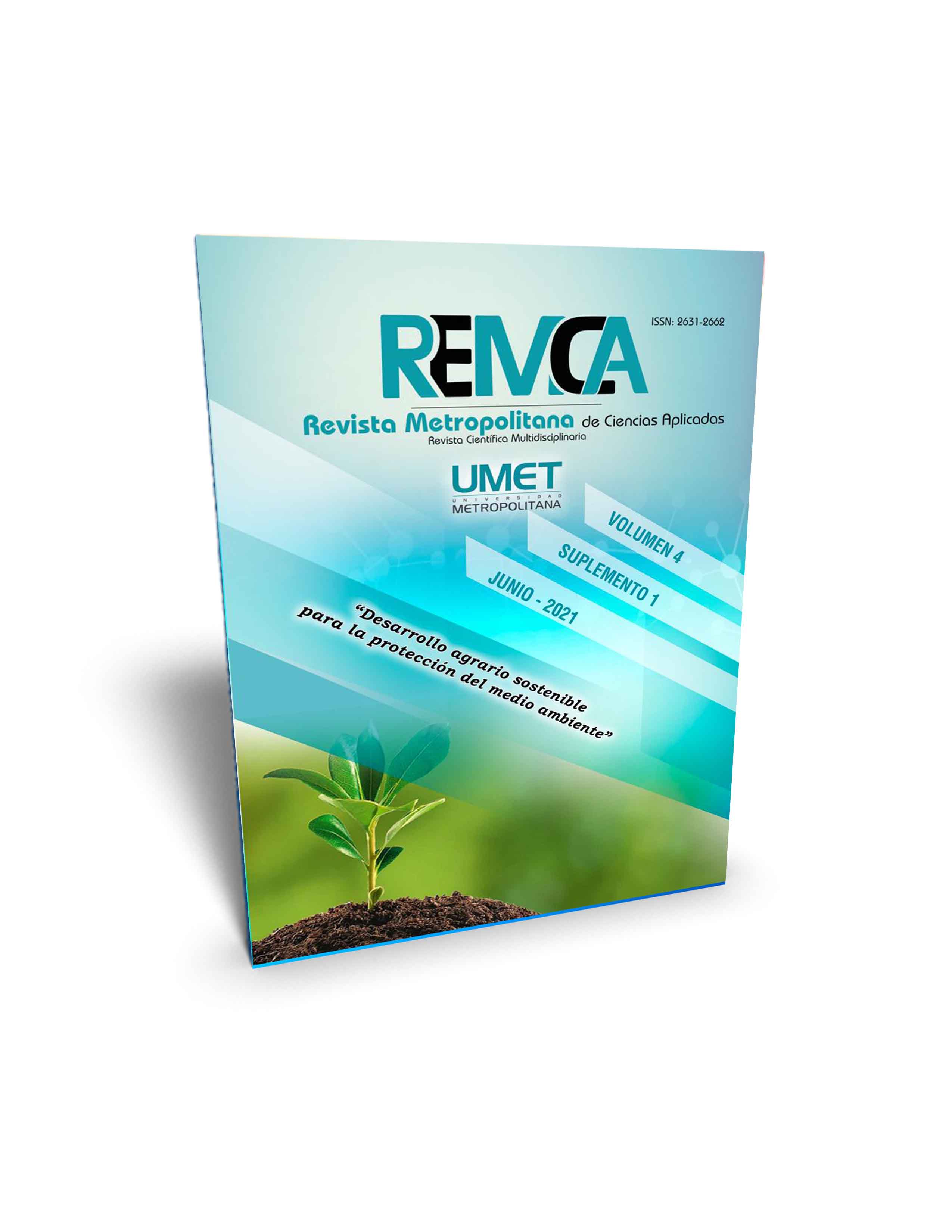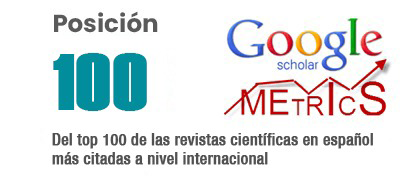Evaluation of the application of three botanicals insecticides on Typophorus nigritus
DOI:
https://doi.org/10.62452/hxpyyv29Keywords:
Botanical insecticides, chrysomelid, technical efficiencyAbstract
The experimental work was carried out at the UBPC ¨Paquito Borrero Lavadí¨ located in the municipality of Palma Soriano in the Santiago de Cuba province. This experiment was carried out with 4 treatments and 5 replications, 3 treatments with the application of botanicals insecticides (Adelfa, Cardona and Tabaquina) and a control in a brown soil without carbonate. Counting on an experimental area of 13,400 m2, divided into 16 plots of 558 m2 in area. The proposed objective was to evaluate the efficiency of three natural insecticides on Typophorus nigritus populations in sweet potato crop. It was found that the Cardona application turned out to be the best followed by the Tabaquina applications with the best values of technical efficiency and of the indicators of the development and yield of the crops.
Downloads
References
Agroware. (2016). Insectos en la agricultura: ¿Enemigos o aliados? https://sistemaagricola.com.mx/blog/insectos-en-la-agricultura/
Álvarez, J. (2013). Conferencia 5: El control de malezas en el Manejo Integrado de Plagas. http://moodle.uclv.edu.cu
Castellón, M. (2011). Estudios biológicos y elementos para el manejo de Typophorus nigritus Fabricius (Coleoptera: Chrysomelidae) en plantaciones de boniato (Ipomoea batatas (L.) Lam. (Tesis doctoral). Universidad Central “Marta Abreu” de Las Villas.
Castellón, M., & González R. (2019). Momento de aparición de las lesiones causadas por Typophorus nigritus (F.) en el boniato en época de primavera. Rev. Agricultura Tropical, 5(1), 51-55.
Castellón, M., García Y., & Fuentes H. (2012) Aspectos de la biología de Typophorus nigritus F. (Coleoptera:Chrysomelidae) en el boniato (Ipomoea batatas (L.) Lam.).Centro Agrícola, 39(1), 33-40.
Delgado-Zegarra, J., Álvarez-Risco, A., & Yáñez, J. A. (2018). Uso indiscriminado de pesticidas y ausencia de control sanitario para el mercado interno en Perú. Rev Panam Salud Publica, 42.
Díaz, J. (2009). Disminución del número de aplicaciones de plaguicidas químicos en la Empresa Cultivos Varios Manacas. (Tesis de Maestría). Universidad Central Marta Abreu de Las Villas.
Díaz, O., & Betancourt Aguilar, C. R. (2018). Los pesticidas; clasificación, necesidad de un manejo integrado y alternativas para reducir su consumo indebido: una revisión. Revista Científica Agroecosistemas, 6(2), 14-30.
Estrada, M. A. (2018). manejo de plaguicidas botanicos. https://www.ucm.es/data/cont/media/www/pag-79266/ManejoPlaguicidas.pdf
Hernández Chinchilla, D. L. (2018). Diseño de estrategias agrosostenibles para los sistemas productivos de plátano desarrollados por estudiantes de cuarto año de ingeniería agronómica. (Trabajo de grado). Universidad de La Salle.
Jiménez, E. (2016). Plagas de Cultivos. Universidad Nacional Agraria.
Lezcano Fleires, J. C., Miranda-Tortoló, T., Lamela López, L., Montejo-Sierra, I. L., Oropesa-Casanova, K., Alonso-Amaro, O., Mendoza, I., & León-Hidalgo, R. (2021) Evaluación de la biodiversidad en el manejo agroecológico de plagas en una entidad productiva de Matanzas. Pastos y Forrajes, 43(4), 293-303.
Marrero, L. (2003). Plagas insectiles asociadas a genotipos se soya en siembras de primavera: análisis de riesgo y alternativas de manejo integrado. http://monografias.umcc.cu/monos/2003/Mono6.pdf
Martínez, E., & Manzanares, R. (2020). Insecticidas botánicos registrados y no registrados en Nicaragua. Revista Universitaria del Caribe, 25(2), 131-141.
Mesa, V., Marín, P., Ocampo, O., Calle, J., & Monsalve, Z. (2019). Fungicidas a partir de extractos vegetales: una alternativa en el manejo integrado de hongos fitopatógenos RIA. Revista de Investigaciones Agropecuarias, 45(1), 23-30.
Pérez, N., & Vázquez, L (2001). Manejo ecológico de plagas. En, Transformando el campo cubano: avances de la agricultura sostenible. (pp. 191-223). ACTAF.
Santoro, F. H., Bezzi, A. Vigevano, A., & Cantos, F. (1980). Biología del negrito de la batata, Typophorus nigritus nitidulus (F) y ensayo preliminar sobre control químico de adultos. Instituto Nacional de Tecnología Agropecuaria.
Townsend, G., & Heuberger, J. (1943). Methods for estimating losses caused by disease in fungicide experiments. Plant Dis. Reptr., 27, 340-343.
Van Driesche, R., Hoodle, M., & Center, T. (2007). Control de Plagas y malezas por enemigos naturales. https://www.fs.fed.us/foresthealth/technology/pdfs/VANDRIESCHE_CONTROL_Y_PLAGAS_WEB.pdf
Vázquez, L. (1979). Principales plagas de insectos en los cultivos económicos de Cuba. Ciencia y Técnica en la Agricultura. Protección de Plantas, 2(1), 61-79.
Downloads
Published
Issue
Section
License
Copyright (c) 2021 Daniel Rafael Vuelta Lorenzo, Miriela Rizo Mustelier (Autor/a)

This work is licensed under a Creative Commons Attribution-NonCommercial-ShareAlike 4.0 International License.
Authors who publish in Revista Metropolitana de Ciencias Aplicadas (REMCA), agree to the following terms:
1. Copyright
Authors retain unrestricted copyright to their work. Authors grant the journal the right of first publication. To this end, they assign the journal non-exclusive exploitation rights (reproduction, distribution, public communication, and transformation). Authors may enter into additional agreements for the non-exclusive distribution of the version of the work published in the journal, provided that acknowledgment of its initial publication in this journal is given.
© The authors.
2. License
The articles are published in the journal under the Creative Commons Attribution-NonCommercial-ShareAlike 4.0 International License (CC BY-NC-SA 4.0). The terms can be found at: https://creativecommons.org/licenses/by-nc-sa/4.0/deed.en
This license allows:
- Sharing: Copying and redistributing the material in any medium or format.
- Adapting: Remixing, transforming, and building upon the material.
Under the following terms:
- Attribution: You must give appropriate credit, provide a link to the license, and indicate if any changes were made. You may do this in any reasonable manner, but not in any way that suggests the licensor endorses or sponsors your use.
- NonCommercial: You may not use the material for commercial purposes.
- ShareAlike: If you remix, transform, or build upon the material, you must distribute your creation under the same license as the original work.
There are no additional restrictions. You may not apply legal terms or technological measures that legally restrict others from doing anything the license permits.




